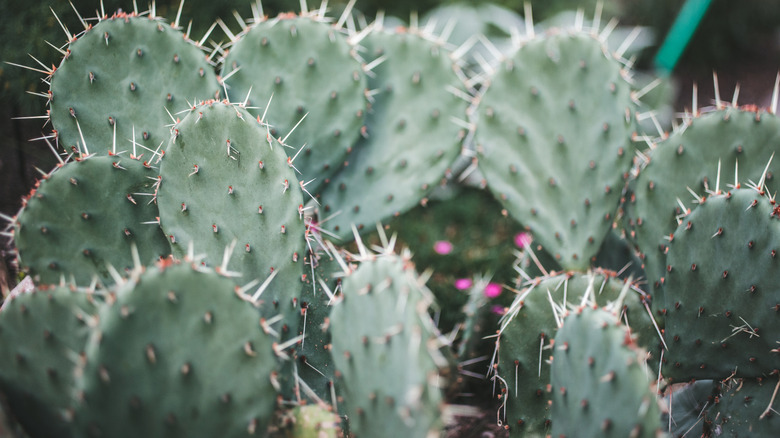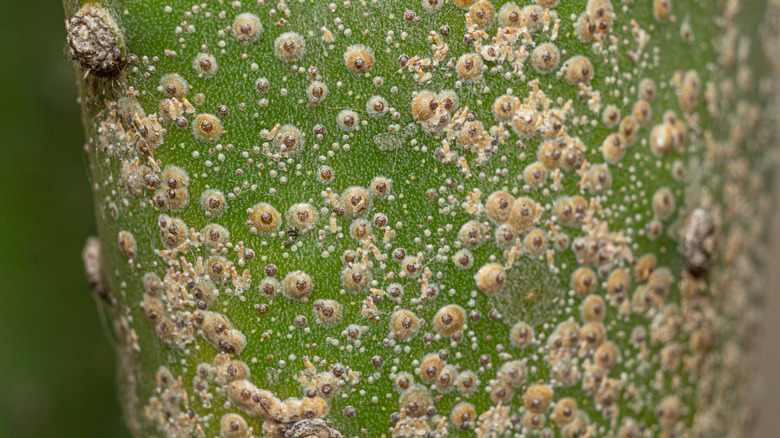Why There Are White Spots On Your Cactus (And How To Get Rid Of Them)
We may receive a commission on purchases made from links.
Having a cactus is an easy and low-maintenance plant, as it requires little upkeep. They grow slowly but live for many years with sun and infrequent watering. They can even help provide extra security around your home. However, if you notice that your indoor or outdoor cacti develop white spots, you are not alone. These spots may be the result of cochineal bugs, more commonly referred to as scale. It could also be sunburn or the result of a fungus. You can remove these spots by scrubbing and wiping down the plant, carefully cutting out the unaffected parts and repotting the cactus. You could also use antifungal sprays.
Depending on where you grow your cacti — whether as a beginner gardener or keeping them inside your home — the white spots can appear differently. Cochineal bugs are parasites that get into the skin of your cactus to steal its juice. They look like spots with an outer circle that conceals the bugs. Fungus could be the result of moist conditions that cause spores. The fungus could also come from within the soil. Fungal infections are more common during the spring. Both white spots can spread and cause real damage to your cactus. A sunburn on your cactus can take on a yellow appearance.
How to get rid of the parasites or fungus
Your first step is determining if your cactus has a parasite, a fungus, or a sunburn. Cochineal bugs are waxy in appearance and present a bumpy feeling on the cactus. To remove the scale, start by washing off the white bumps with a hose. Next, pour some rubbing alcohol in a bowl, then use a small paintbrush to rub the alcohol in and brush off the remaining scale from the cactus. You can go over it more than once to make sure you remove all the scale. If you do not have rubbing alcohol, a gentle scrub brush and warm, soapy water can remove the cochineal bugs from the cactus. Just be sure to go back and check your cacti every couple of days to be sure you have removed it all. Repeat the process if needed.
Fungus has a powdery, white (or black) appearance. An antifungal spray may work best if caught early, like this Grower's Ally Fungicide Spray for Plants. If it is severely infected, cut some of the healthier parts of your cactus off. Then, you can safely repot the cactus for new growth and discard the fungus-infected plant. Cacti with sunburn can have a furry discoloration. They simply need less exposure to sunlight, so you can move them to a shaded area. You can also give it some water if the pot is well-draining, so you do not over hydrate.

